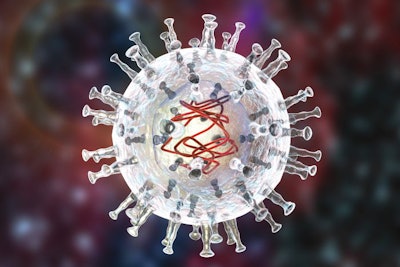
Soybeans seem to stabilize ASF virus, but what that means for disease spread remains unknown.
Several studies over the past few years have demonstrated that African swine fever (ASF), as well as other viruses, could spread readily in soybeans and soybean-derived feed ingredients. But understanding just how significant the real-life contamination may be is still a work in progress, according to Megan Niederwerder, associate director of the Swine Health Information Center.
Niederwerder has received a US$650,000, four-year grant from the U.S. Department of Agriculture’s (USDA) National Institute of Food and Agriculture (NIFA) to study the susceptibility of soybean feed ingredients to contamination by the ASF virus — and to evaluate methods for detecting the virus in soybeans. The new project will follow and build on work by Niederwerder and others that has demonstrated viruses persist and remain infectious longer when they stow away in soybeans and soybean-derived products.
“Soybean products seem to stabilize not only ASF, but other viruses important to the swine industry,” including porcine epidemic diarrhea virus, foot-and-mouth disease and Senecavirus, Niederwerder said. This has held true across multiple studies; the virus remained more stable in soybean products than in finished feed. Soybeans have even beat out laboratory media designed to house viruses for the dubious prize of best viral habitat.
It’s not yet clear why viruses have such an affinity for soybeans, but it’s likely related to the protein or moisture content of the beans, Niederwerder said. And while we know soybeans could provide multiple viruses with an ideal environment, just how much viral transmission occurs as a result of soybean imports remains a mystery.
This latest study hopes to shed some light on that unanswered question. In the first part of the study, researchers will run experiments at Plum Island Animal Disease Center to test how long ASF virus persists in organic soybean meal and soybean oil cake — two of the most common ingredients imported from ASF-positive countries to the U.S. In the second stage of the study, Niederwerder said, the team will evaluate various methodologies for detecting ASF contamination in feed ingredients in order to better understand how governments and industry might monitor the spread of the virus in feed.
In the meantime, Niederwerder said, prevention remains the most important strategy for addressing the contamination of feed ingredients by ASF. Where possible, she cautioned against importing soybean products from countries with active ASF outbreaks. If that is not possible, she said, producers should adhere to biosecurity best practices such as separating incoming ingredients from outgoing product, and refer to existing guidelines on recommended holding times and temperatures for soybean products.
















